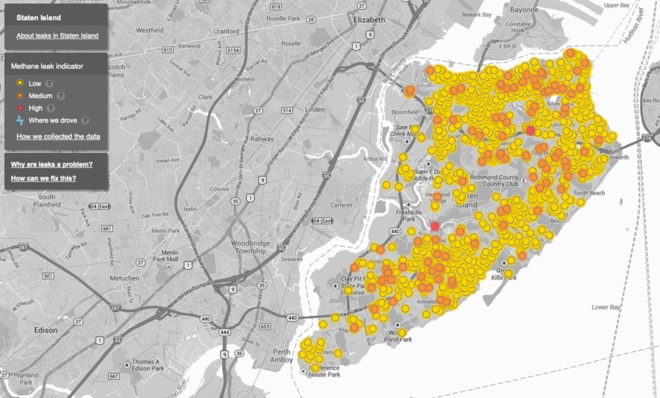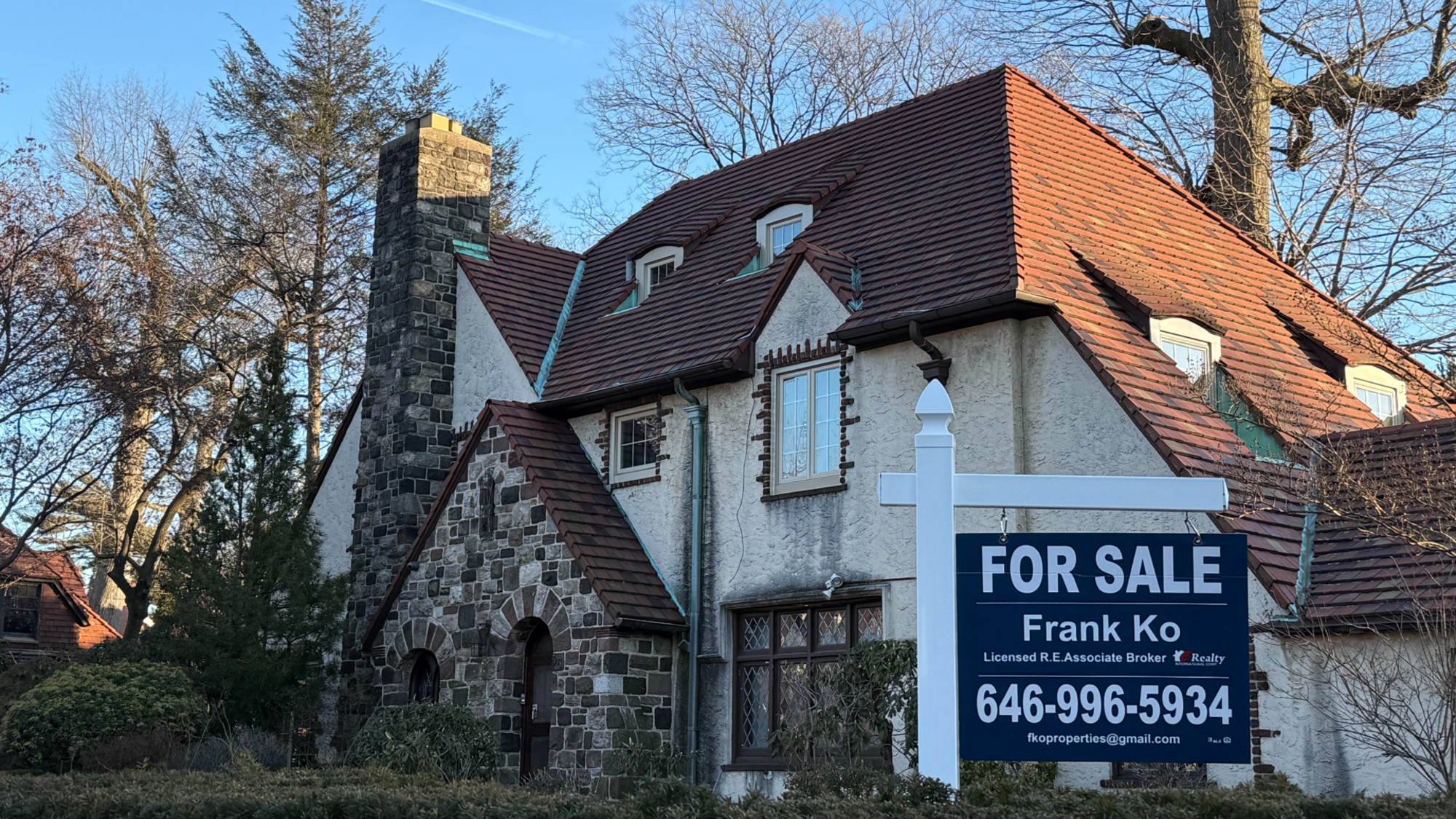How Google Street View could save us from climate change and gas explosions
Turns out its camera cars make perfect methane leak detectors


Monitoring methane leaks is a huge pain in the neck. Why? Because the extraction and distribution infrastructure is spread out all over the place. You've got the production and refining process, the big transmission pipelines, and the minor pipelines going to literally millions of different businesses and houses, fueling stoves and water heaters.
The leaks in minor pipelines are especially tough to tackle, because getting good measurements over such an enormous area takes a ton of effort and time. According to the EPA, about 20 percent of the methane emitted by the natural gas industry comes from local distribution systems. They're not the biggest source of the industry's methane emissions, but they will probably be the hardest to fix.
Worse still, with Congress completely prostrate and useless, and the EPA busy rolling out its new rule on coal-fired power plants, there is little chance the government will take strong action on leaks. Methane is many times more powerful a greenhouse gas than carbon dioxide, so plugging these leaks is critically important for tackling climate change.
The Week
Escape your echo chamber. Get the facts behind the news, plus analysis from multiple perspectives.

Sign up for The Week's Free Newsletters
From our morning news briefing to a weekly Good News Newsletter, get the best of The Week delivered directly to your inbox.
From our morning news briefing to a weekly Good News Newsletter, get the best of The Week delivered directly to your inbox.
However, a new development gives us a bit of new optimism. The Environmental Defense Fund has been working with Google's mapping division to place methane monitoring equipment on their camera cars, which are constantly driving all over. (Find the maps here.) My colleague Catherine Garcia explains:
That's where a tricked-out Google Street View car comes into play. Google Earth Outreach and the Environmental Defense Fund have teamed up to turn several Subaru Imprezas into mobile methane trackers...scientists add tubing across the front grill, which helps push a constant stream through a very small dehumidifier and then into a gas analyzer. Real-time data is streamed to a monitor, showing how fast the car is driving and the amount of methane on the street.
The pilot project's results were released on Wednesday, with information coming in from Boston, Indianapolis, and Staten Island. The findings seem to show that older cities have more of an issue with leaks, likely due to old infrastructures. Indianapolis, which has newer pipes, was the cleanest, with just one leak recorded for every 200 miles. [The Week]
First, some caveats. This is a pilot project, with preliminary results in three cities only. Scaling it up will take some money and time. It's only measuring street-level leaks, not the major pipelines or the well heads where the gas is fracked and mined, which account for a greater share of the total methane volume.
However, all that said, this is a program with some real potential. The pilot program found vast discrepancies in the number of leaks between cities; Boston and Staten Island had one about every mile, as compared to Indianapolis' 200 miles, which suggests it will help with allocation of repair resources. Sticking the monitoring equipment on Google's camera cars is a stroke of genius that ought to dramatically cheapen the overall effort, and make it easier to scale nationwide. And though this doesn't track gas field leaks, the EDF and others have done multiple studies on that problem and are working on more.
The upshot of all this is that, if this can be deployed nationwide, it will make it easier both for concerned state and local governments to track and patch up their local leaky system, and for citizens to identify the worst leaks and organize political pressure to get them plugged. And remember, this isn't just climate change we're talking about — methane is highly flammable, and bad leaks can also cause huge explosions.
A free daily email with the biggest news stories of the day – and the best features from TheWeek.com
In the end, this is no replacement for coordinated federal action. In particular, many natural gas systems will need big, expensive upgrades, which many localities won't be able to afford on their own. And having this effort in private hands means it could be stopped at any time. But until the politics of Washington change enough to enable something to happen, this isn't a bad stopgap. Kudos to Google and the EDF for putting it together.
Ryan Cooper is a national correspondent at TheWeek.com. His work has appeared in the Washington Monthly, The New Republic, and the Washington Post.
-
 Will Trump’s $12 billion bailout solve the farm crisis?
Will Trump’s $12 billion bailout solve the farm crisis?Today’s Big Question Agriculture sector says it wants trade, not aid
-
 ‘City leaders must recognize its residents as part of its lifeblood’
‘City leaders must recognize its residents as part of its lifeblood’Instant Opinion Opinion, comment and editorials of the day
-
 10 upcoming albums to stream during the winter chill
10 upcoming albums to stream during the winter chillThe Week Recommends As the calendar turns to 2026, check out some new music from your favorite artists
-
 Has Zohran Mamdani shown the Democrats how to win again?
Has Zohran Mamdani shown the Democrats how to win again?Today’s Big Question New York City mayoral election touted as victory for left-wing populists but moderate centrist wins elsewhere present more complex path for Democratic Party
-
 Millions turn out for anti-Trump ‘No Kings’ rallies
Millions turn out for anti-Trump ‘No Kings’ ralliesSpeed Read An estimated 7 million people participated, 2 million more than at the first ‘No Kings’ protest in June
-
 Ghislaine Maxwell: angling for a Trump pardon
Ghislaine Maxwell: angling for a Trump pardonTalking Point Convicted sex trafficker's testimony could shed new light on president's links to Jeffrey Epstein
-
 The last words and final moments of 40 presidents
The last words and final moments of 40 presidentsThe Explainer Some are eloquent quotes worthy of the holders of the highest office in the nation, and others... aren't
-
 The JFK files: the truth at last?
The JFK files: the truth at last?In The Spotlight More than 64,000 previously classified documents relating the 1963 assassination of John F. Kennedy have been released by the Trump administration
-
 'Seriously, not literally': how should the world take Donald Trump?
'Seriously, not literally': how should the world take Donald Trump?Today's big question White House rhetoric and reality look likely to become increasingly blurred
-
 Will Trump's 'madman' strategy pay off?
Will Trump's 'madman' strategy pay off?Today's Big Question Incoming US president likes to seem unpredictable but, this time round, world leaders could be wise to his playbook
-
 Democrats vs. Republicans: who are US billionaires backing?
Democrats vs. Republicans: who are US billionaires backing?The Explainer Younger tech titans join 'boys' club throwing money and support' behind President Trump, while older plutocrats quietly rebuke new administration
